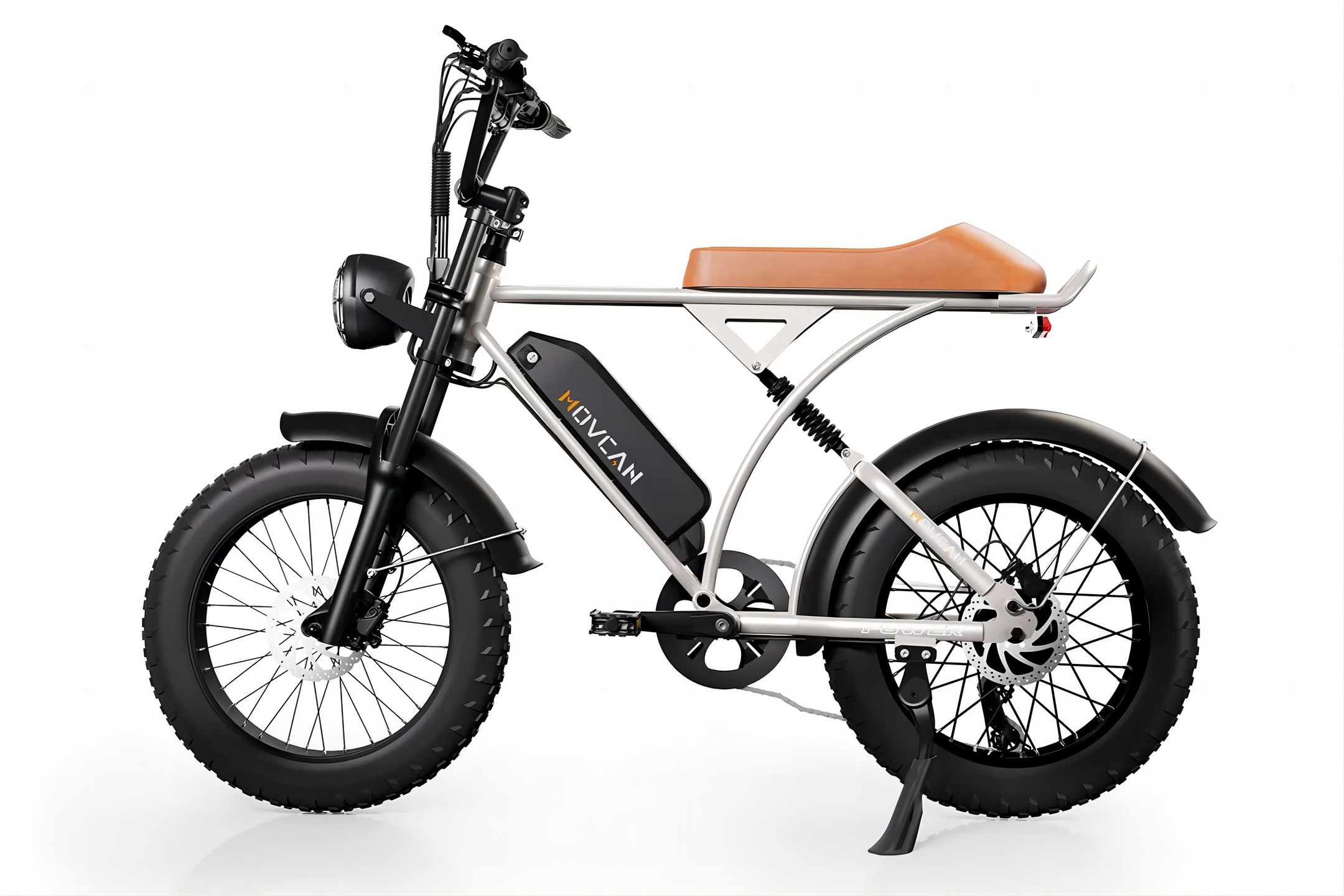
E-bike vs. Traditional Bike: Which Is Right for You?
The surge in popularity of electric bikes (e-bikes) alongside traditional bicycles reflects the evolving landscape of modern transportation. As more individuals seek sustainable and efficient modes of travel, the choice between these two options becomes increasingly pivotal. Today, we delve into the nuances of this decision, shedding light on the factors that influence the selection process. By understanding the distinctions between e-bikes and traditional bikes, riders can make informed choices that align with their specific preferences and requirements.
Advantages of E-bikes
Enhanced Speed and Efficiency with Electric Motor
E-bikes harness the power of electric motors to provide riders with an added boost in speed and efficiency. This technology enables riders to cover distances more swiftly, making them ideal for commuters and leisure cyclists alike.
Reduced Effort, Particularly Beneficial for Uphill Climbs
One of the standout features of e-bikes is their ability to reduce the physical effort required, especially when tackling uphill climbs. With the assistance of the electric motor, riders can conquer steep inclines with ease, enhancing the overall cycling experience.
Extended Range for Longer Rides Without Fatigue
E-bikes offer an extended range compared to traditional bicycles, allowing riders to embark on longer journeys without experiencing fatigue. This increased endurance opens up opportunities for exploration and adventure, making e-bikes a versatile choice for outdoor enthusiasts.
Accessibility for Riders of Varying Fitness Levels
One of the most significant advantages of e-bikes is their accessibility for riders of all fitness levels. Whether you're a seasoned cyclist or just starting out, the electric assistance levels the playing field, enabling individuals to enjoy cycling regardless of their physical condition.
Convenient for Commuting and Errands
E-bikes provide a convenient and eco-friendly mode of transportation for commuting and running errands. With the ability to effortlessly navigate through city streets and urban environments, e-bikes offer a practical solution for daily transportation needs.
Advantages of Traditional Bikes
Intense Workout Leading to Improved Fitness
Traditional bikes offer a more intense workout experience, as riders rely solely on their own physical power to propel the bike forward. This results in improved cardiovascular health, muscle strength, and overall fitness levels over time.
Stronger Connection to the Ride and Environment
Riding a traditional bike fosters a stronger connection to the ride and the surrounding environment. With every pedal stroke, riders feel a deeper sense of engagement with the road beneath them, enhancing the overall cycling experience.
Simpler Mechanics for Easier Maintenance
Traditional bikes boast simpler mechanical systems compared to e-bikes, making them easier to maintain and repair. With fewer electronic components to worry about, riders can enjoy greater peace of mind and lower maintenance costs.
Lighter Weight for Easier Maneuverability and Transport
Traditional bikes are typically lighter in weight than e-bikes, making them easier to maneuver and transport when not in use. This lightweight design enhances agility and responsiveness, particularly in urban settings where space is limited.
Lower Initial Cost and Maintenance Expenses
One of the key advantages of traditional bikes is their lower initial cost and maintenance expenses compared to e-bikes. With no need for expensive electronic components or battery replacements, traditional bikes offer a cost-effective option for budget-conscious riders.
Factors to Consider When Choosing
Riding Purpose
The first step in choosing between an e-bike and a traditional bike is to consider your riding purpose. Are you primarily commuting to work, leisurely exploring scenic routes, exercising for fitness, or using the bike for transportation? Understanding your intended use will help narrow down the options and ensure the chosen bike aligns with your lifestyle.
Terrain
Another crucial factor to consider is the terrain you'll be riding on. Whether you'll be navigating flat roads, tackling steep hills, or traversing rough terrains will impact the type of bike that best suits your needs. E-bikes excel in assisting riders on uphill climbs and challenging terrains, while traditional bikes offer a more immersive experience on smoother surfaces.
Fitness Level and Physical Limitations
Your fitness level and any physical limitations should also be taken into account when choosing a bike. E-bikes provide assistance that can accommodate riders of varying fitness levels, making cycling more accessible to those with limited mobility or stamina. Traditional bikes, on the other hand, offer a more physically demanding workout, which may be preferred by individuals seeking a higher intensity exercise regimen.
Budget
Consider your budget for both the initial purchase and long-term maintenance of the bike. While e-bikes typically have a higher upfront cost compared to traditional bikes, they may offer savings in the long run due to reduced commuting expenses and lower maintenance requirements. Evaluate your financial situation to determine the most cost-effective option for your needs.
Environmental Concerns and Carbon Footprint
For environmentally-conscious riders, considering the bike's impact on the environment is essential. E-bikes are generally considered more eco-friendly than traditional bikes, as they provide an alternative to car travel and reduce carbon emissions. Factor in your environmental values when making your decision to ensure your choice aligns with your sustainability goals.
Who Would Benefit Most from E-bikes?
Commuters Seeking a Sweat-Free and Efficient Mode of Transportation
E-bikes provide commuters with a convenient and efficient mode of transportation, allowing them to arrive at their destinations sweat-free and on time, even in busy urban environments.
Seniors and Individuals with Physical Limitations
E-bikes offer a new level of mobility and independence for seniors and individuals with physical limitations, making cycling more accessible and enjoyable for a wider range of people.
Fitness Enthusiasts Looking for Adjustable Workout Intensity
For fitness enthusiasts, e-bikes offer adjustable levels of assistance, allowing riders to customize their workout intensity according to their fitness goals and preferences.
Environmental Advocates Promoting Eco-Friendly Transportation
Environmental advocates appreciate e-bikes as a sustainable transportation option with a lower carbon footprint compared to traditional cars, helping to reduce air pollution and greenhouse gas emissions.
Urban Dwellers Navigating Congested City Streets
In congested urban areas, e-bikes offer a practical solution for navigating through traffic and reaching destinations efficiently, without the hassle of parking or reliance on public transportation.
Families Enjoying Leisurely Rides Together
E-bikes make it easier for families to enjoy leisurely rides together, as riders of all ages and fitness levels can join in the fun without feeling exhausted or left behind.
How to Choose the Right Bike for You
Evaluate Battery Life and Motor Power
When selecting an e-bike, consider the battery life and motor power to ensure they meet your desired range and speed requirements. Assessing these factors will help determine the bike's suitability for your intended use.
Consider Frame Design and Weight
For both e-bikes and traditional bikes, frame design and weight are crucial considerations for portability and comfort. Choose a bike with a frame design that suits your riding style and a weight that you can easily maneuver and transport.
Assess Ease of Maintenance
Evaluate the ease of maintenance for long-term care of the bike. Consider factors such as the complexity of the mechanical systems and availability of replacement parts to ensure you can properly maintain your bike for years to come.
Balance Initial Investment with Long-Term Value
Balance your initial investment with the long-term value and savings offered by the bike. While e-bikes may have a higher upfront cost, they may offer savings in the long run through reduced commuting expenses and maintenance requirements.
Ensure Riding Comfort and Proper Fit
Finally, prioritize riding comfort and proper fit to ensure an enjoyable experience on your chosen bike. Test ride different models to find one that suits your body size and riding style, and consider accessories such as ergonomic saddles and handlebars for added comfort.
Conclusion
As we conclude our exploration of the e-bike versus traditional bike debate, it's clear that the right choice ultimately depends on your individual preferences and lifestyle needs. Whether you're drawn to the convenience and efficiency of e-bikes or the traditional charm and physicality of traditional bikes, there's no shortage of options to suit your riding style.
However, if you're seeking an e-bike that embodies versatility, performance, and adventure, look no further than MOVCAN's e-bike. With its all-terrain capabilities and full suspension power source, this e-bike is not just a mode of transportation—it's an invitation to adventure. So, dare to be bold, dare to venture forth, and let every ride be an exhilarating journey. Choose MOVCAN and elevate your biking experience to new heights.


